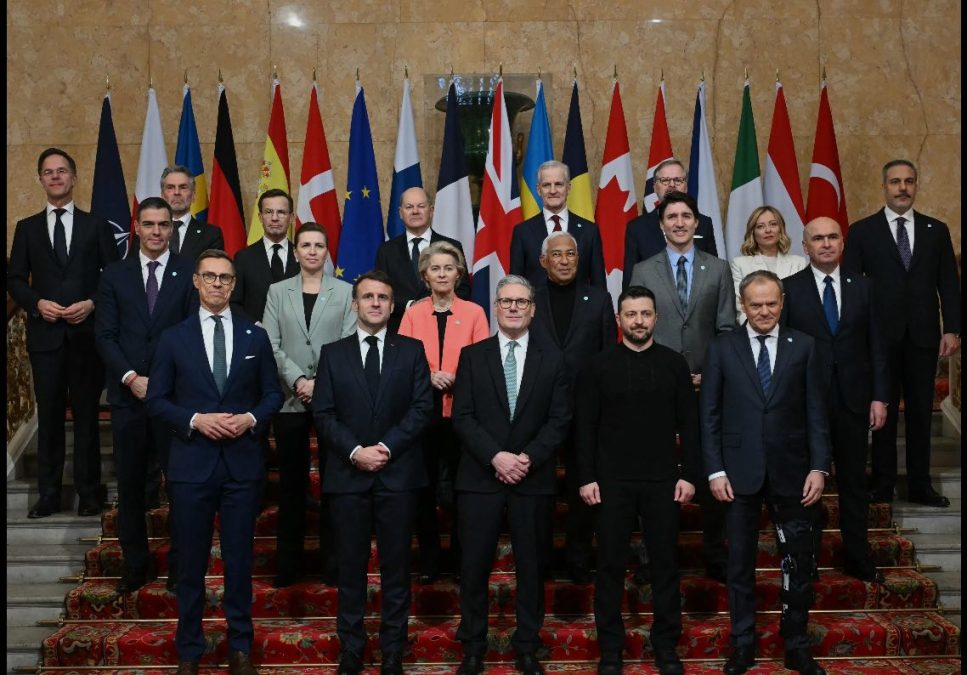Brussels draws a red line against Europe’s secret peace plan
Brussels draws a red line against Europe’s secret peace plan
With the intensification of diplomatic movements to end the Ukraine war and simultaneous new advances by Russia on the ground, the release of details of a controversial peace plan, developed without the participation of Kyiv and Brussels, has introduced new political and security dynamics to this conflict and has provoked widespread reactions in Europe, the United States, and Ukraine itself.
An analysis of the field and political developments related to the Ukraine war
As the Ukraine war approaches its fifth year, efforts to find a solution to end this asymmetric and costly conflict, especially by the U.S. government, have intensified.
At the same time, the Russian army announced last Thursday that it had taken control of the city of Kupiansk, one of Ukraine’s strategic points in the Kharkiv region.
Valery Gerasimov, Chief of the General Staff of the Russian Armed Forces, in a meeting with Vladimir Putin, the country’s president, announced that Russian forces are advancing on all fronts and have made progress in the regions of Dnipropetrovsk, Zaporizhia, Pokrovsk, and Siversk.
The city of Kupiansk, which had a population of about 55,000 before the war began, was occupied by Russian forces for several months in 2022 but returned to Ukrainian control following a major counterattack that liberated a significant portion of the occupied areas in the Kharkiv region.
Gerasimov also emphasized that Russian forces continue to expand their control in the Dnipropetrovsk region — which they entered last summer — and in the Zaporizhia region in southeastern Ukraine, areas that have remained relatively stable and unchanged over the past months.
Putin also announced in this meeting that the objectives of the special military operation are clear and achieving these objectives unconditionally is necessary, and according to him, the Russian people expect the necessary results from this operation.
On November 19, 2025, several Western media outlets published details of a new peace plan for Ukraine, reportedly being reviewed by members of the teams of Vladimir Putin and Donald Trump without the presence of Ukraine or the European Union.
This 28-article document is largely considered to reflect Russia’s maximalist demands.
According to this plan, the possibility of Russia leasing the Donbas region to Ukraine is foreseen. Johann Wadephul, Germany’s Foreign Minister, announced that Berlin has not received any official notification from Washington about this plan — which is said to be based on Trump’s 20-point plan for a ceasefire in the Gaza war.
The plan includes the full transfer of Donbas to Russia and imposes restrictions on Ukraine’s military capabilities. In return, Russia would return some of the occupied territories in the Zaporizhia and Kherson provinces to Ukraine.
Jean-Noël Barrot, France’s Foreign Minister, stated that Ukraine seeks a just peace based on respect for the sovereignty of countries and emphasized that peace cannot mean surrender.
In the United States, Marco Rubio, the Secretary of State, announced that Washington continues to draft a list of possible options for ending the war based on the participation of both parties in the conflict, and achieving a sustainable peace requires accepting difficult but necessary concessions by both sides.
Inside Ukraine, President Volodymyr Zelensky announced that Kyiv welcomes any strong and fair proposal to end the war but considers coordination with international partners and maintaining the effective role of the United States necessary.
However, some Ukrainian officials who are aware of the contents of the plan have described this document as unacceptable and believe it is entirely aligned with Russia’s maximalist demands.
Western analysts — especially Ukrainian analysts — also believe that the published plan has nothing to do with peace and is merely a framework for the gradual surrender of Ukraine, as it repeats almost the same positions that Putin proposed four years ago.
In contrast, Russian experts describe this plan as a combination of realistic and practical proposals and say its provisions include transferring Donbas to Russia.
In Brussels, there is also no positive assessment of this initiative. Kaja Kallas, the European Union’s foreign policy chief, emphasized that any peace plan needs the support of Ukrainians and Europeans and clarified that in this war, there is only one aggressor and one victim, and no sign of concessions from Russia is seen.
Elina Valtonen, Finland’s Foreign Minister, also announced that the provisions of the proposed plan apparently were drafted in Moscow and ignore the principles of the United Nations Charter and legal rules related to territorial aggression.

At a macro level, the ongoing fatigue of the war is not only visible among NATO member countries — especially the United States — but also among the citizens and elites of Russia and Ukraine. Washington believes that Russia has been worn down by the war and has lost its previous capability to play the role of the world’s second military power.
On the other hand, Trump also needs to form some kind of cooperation with Moscow to achieve some of his key and ambitious goals, from East Asia to Latin America.
Overall, although a rapid halt to the war would benefit the people of Russia and Ukraine the most, it could have extensive geopolitical consequences in Europe and other parts of the world and strengthen the hypothesis that the Ukraine war is actually a competition among great powers, and its end will also be determined by these players. Therefore, peripheral countries and governments should be careful not to become secondary victims or losers in this process.

